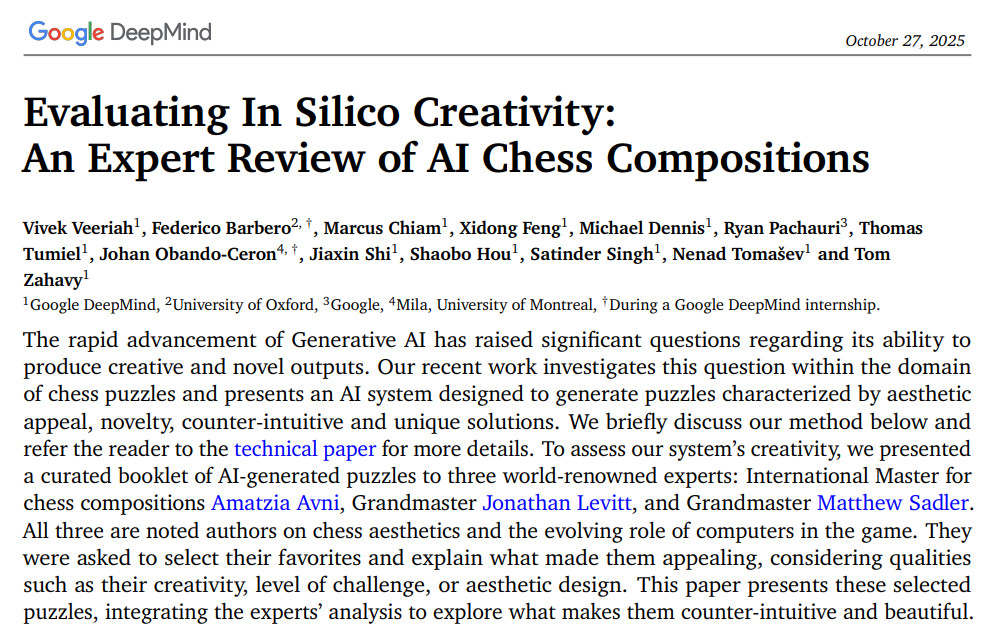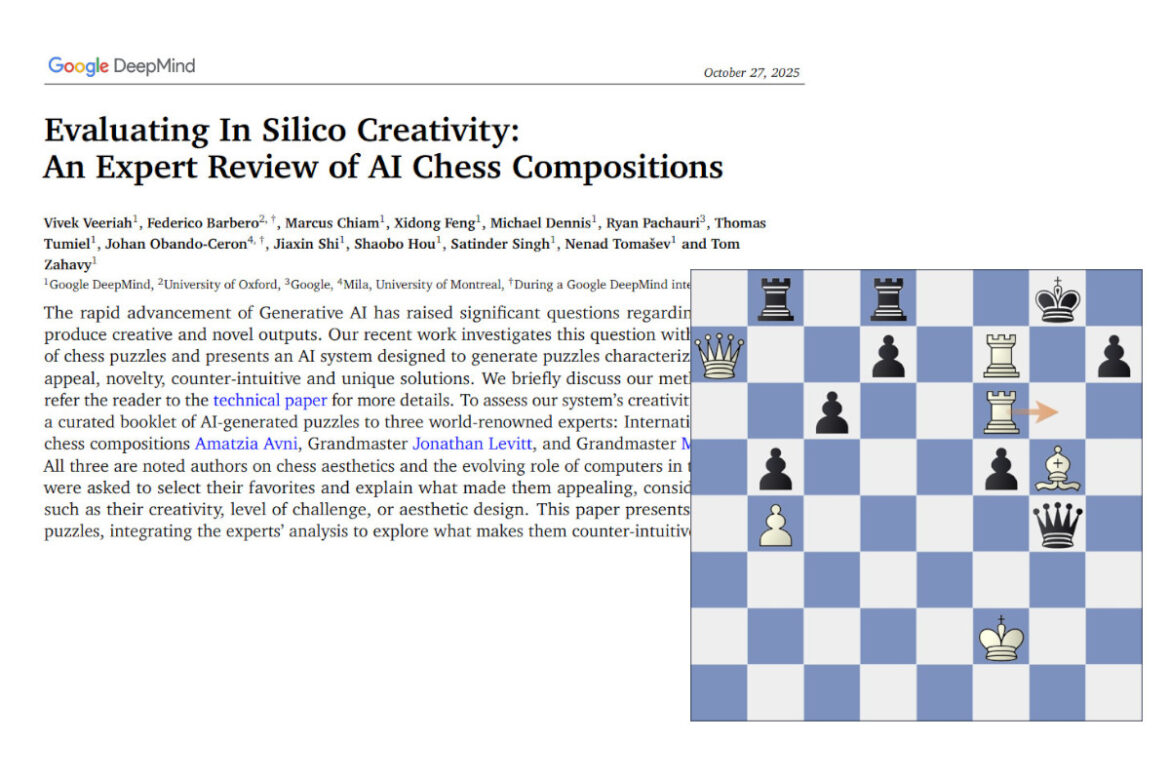AI and the art of chess composition
Researchers from Google DeepMind conducted a study titled Evaluating In Silico Creativity: An Expert Review of AI Chess Compositions to explore whether generative artificial intelligence can produce genuinely creative and aesthetically pleasing outputs.
The project focused on chess composition, using a system designed to generate puzzles with novelty, counter-intuitive ideas, and visual elegance. To assess these AI-generated problems, three experts in chess aesthetics – International Master for chess compositions Amatzia Avni and Grandmasters Jonathan Levitt and Matthew Sadler – were invited to evaluate a curated set of compositions.
The experts received a booklet of selected puzzles and were asked to identify those they found most appealing, commenting on creativity, challenge and design. Their feedback was generally positive, noting the innovative combination of aesthetic themes and realistic, over-the-board vision. However, they also observed that some positions were too simple and lacked the conceptual depth characteristic of traditional human-made endgame studies.
The reviewers offered constructive suggestions for improvement, encouraging greater strategic richness and more elaborate sidelines in future work. They proposed including puzzles that integrate multiple thematic layers or surprising motif combinations, allowing the AI to capture the subtlety typical of advanced chess compositions rather than relying on mechanical pattern generation.
The authors also reflected on the difficulty of defining and measuring creativity in chess. They suggested that a puzzle can be seen as creative when its solution evokes surprise, challenge and beauty, yet acknowledged that such judgments are subjective. Even among experienced experts, opinions diverged on what constitutes true originality or aesthetic merit, underscoring both the promise and the current limitations of AI-generated creativity.

One of the compositions received unanimous acclaim from the experts.
White has aggressively placed pieces, but an exposed King on f2 and a misplaced Queen on a7. White has to manage to mount an attack that does not allow counter-play. Only one move in the position achieves all this.
The winning move is 1.Rg6+!, which Amatzia Avni, Jonathan Levitt and Matthew Sadler described as “unorthodox” and “by no means natural or obvious sacrifice”.
The move starts the attack by giving up both rooks! Amatza Avni further described the move as “certainly not what you would take into considering as the first candidate move”.
Read a longer assessment of the puzzle on the published paper…
On top level the Benoni is a rare guest but with this DVD Rustam Kasimdzhanov this might change. New ways and approaches in most lines and countless improvements of official theory will show you how to play this opening at any level with success.
